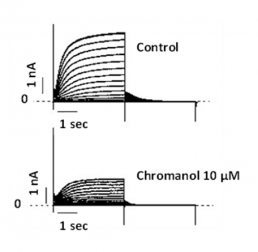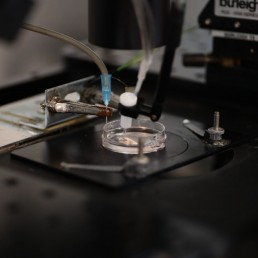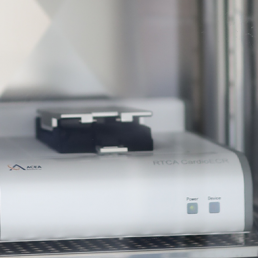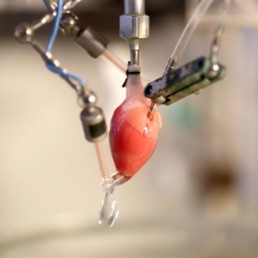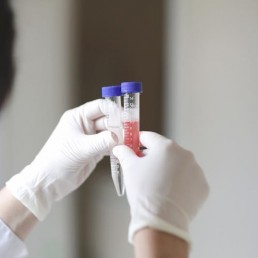hKVLQT1/MinK assays

hKVLQT1/MinK
hKVLQT1/MinK channel encoding for IKs current, plays an important role in the late phase cardiac action potential repolarisation. A pharmacological reduction of the IKs current may delay the repolarisation process and lead to a prolongation of the QT interval. The hKVLQT1/MinK channel is therefore considered as a specific target for cardiac safety assessment.
hKVLQT1/MinK assays & preclinical safety
The cardiac IKs channel (KCNQ1/KCNE1) is one of the main contributors to the repolarizing currents that regulate the ventricular action potential duration (APD) and thus the QT interval in the electrocardiogram. Mutations in cardiac KCNQ1/KCNE1 channels are the most common cause of congenital defects that cause long QT syndrome (LQTS). LQTS is a heart disorder that causes cardiac arrhythmias and 3000 to 4000 sudden deaths in children and young adults in the USA each year.
What is the added value of such a study?
- Threshold concentration of KVLQT1/MinK blockade
- Leading to the determination of the safety range versus efficacious concentration
- You obtain your safety margin
Automated Patch Clamp
Technique
- Human Embryonic Kidney HEK-293 cells
- Experiment conducted at room temperature or at physiological temperature (35°C)
- Up to 6 cumulative increasing concentrations of test compound or biologic.
Measured parameters
- Amplitude of the tail current upon repolarization to –40mV (pA)
- Amplitude of the base current at –80mV (pA)
- Ion current amplitude measurement
- Inhibition of hKvLQT1/MinK tail current amplitude (%)
- IC50 value (at least 4 concentrations required)
Main advantages
- High throughput screening
- Cost effective
- Fast process to delivery results
- Perfect at earliest stages
- Design protocol could be adapted
Manual Patch Clamp
Technique
- Human Embryonic Kidney HEK-293 cells
- Experiment conducted at room temperature or at physiological temperature (35°C)
- Up to 5 increasing concentrations of test compound tested independently
- At least 3 treated cells are recommended
Measured parameters
- Amplitude of the tail current upon repolarization to –40mV (pA)
- Amplitude of the base current at –80mV (pA)
- Ion current amplitude measurement
- Inhibition of hKvLQT1/MinK tail current amplitude (%)
- IC50 value (at least 4 concentrations required)
Main advantages
- Technically robust
- Highly informative (more accurate IC50 value)
- Strongly replicable
- Design protocol could be adapted
Stimulation protocol
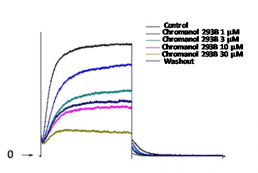
Typical effects of Chromanol on IKs current recorded from HEK-293 cells.
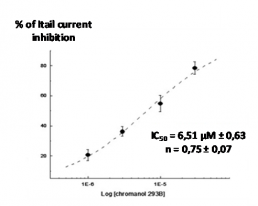
Reference compounds
Reference CompoundsIC₅₀
XE-9911.5 µM
Chromanol 293B6.5 µM
Mefloquine0.7 µM
